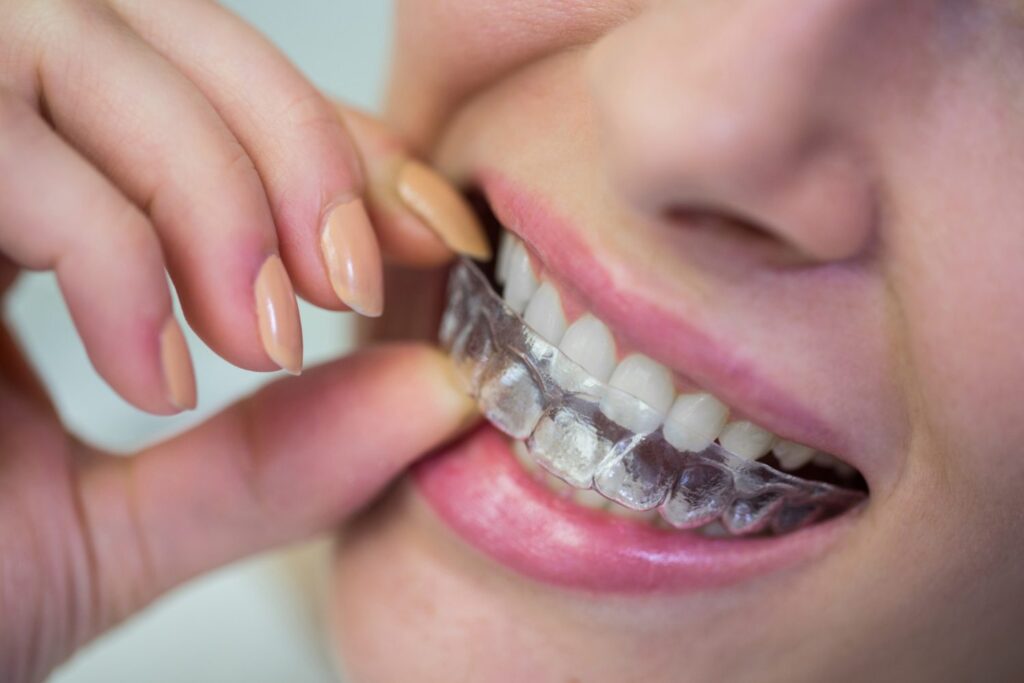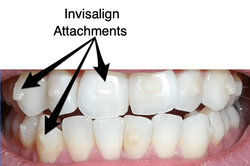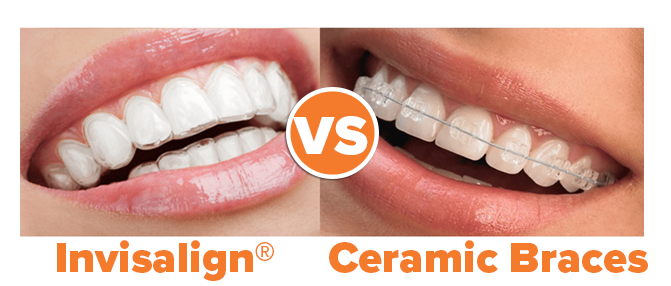Frequently Asked Questions Regarding Invisalign: Everything You Required to Know
Frequently Asked Questions Regarding Invisalign: Everything You Required to Know
Blog Article
Invisalign vs. Conventional Dental braces: Which Choice Is Right for You?
When considering orthodontic therapy, the choice in between Invisalign and traditional dental braces presents numerous vital aspects that merit cautious evaluation. Invisalign uses a very discreet choice with detachable aligners, while standard braces provide a much more noticeable yet efficient remedy for extreme misalignment.
Review of Treatment Choices

On the other hand, typical dental braces are composed of metal brackets and cables that are bound to the teeth. This approach applies continuous stress in time to attain placement. While effective for complicated orthodontic concerns, typical braces call for routine sees for changes and can posture difficulties in preserving oral hygiene because of the problem of cleaning around brackets and cords.
Both choices have their benefits, and the option usually rests on details dental conditions, way of life preferences, and person compliance. Inevitably, speaking with an orthodontic expert is essential for identifying one of the most appropriate treatment strategy tailored to individual needs. Recognizing the nuances of each choice can considerably affect the total success of orthodontic treatment.
Aesthetic Factors To Consider
A considerable element affecting the selection between Invisalign and standard braces is the aesthetic allure each therapy provides. Invisalign aligners are crafted from clear plastic, making them basically undetectable when worn. This discreet appearance is particularly appealing to adults and teens who may feel awkward concerning their orthodontic treatment. The capability to preserve a natural smile throughout the placement procedure can considerably improve the client's confidence in social and expert settings.
On the other hand, standard dental braces include steel braces and wires, which can be a lot more noticeable. While developments in orthodontic innovation have brought about the advancement of smaller brackets and tinted elastics, standard dental braces still keep an even more obvious account. For some individuals, the visibility of dental braces may prevent them from looking for required treatment.
Eventually, the selection between Invisalign and standard dental braces might pivot on personal preferences pertaining to visual appeals. Clients who focus on discretion usually lean towards Invisalign, while those who are less concerned regarding exposure might choose for conventional dental braces. Comprehending the visual ramifications of each alternative is vital for making a notified decision that straightens with one's lifestyle and preferences.
Comfort and Convenience

In regards to convenience, Invisalign aligners are removable, allowing people to enjoy their favored foods without restriction and keep optimal dental hygiene. Brushing and flossing are streamlined, as the aligners can be secured throughout these routines, whereas conventional braces require careful maneuvering around wires and braces.
In contrast, conventional braces demand normal changes, making them much less hassle-free for those with hectic timetables. On the whole, the convenience and ease of Invisalign make it an attractive selection for lots of site people looking for orthodontic treatment.
Treatment Period and Performance
While both Invisalign and typical dental braces are efficient in fixing oral misalignments, the period of treatment can differ dramatically between the two alternatives. Normally, Invisalign treatment can take anywhere from 12 to 18 months, depending on the complexity of the situation. The clear aligners work by slowly changing teeth into their preferred positions, and regular follow-ups with an orthodontist help guarantee progress stays on track.
In contrast, standard braces frequently call for a longer dedication, generally ranging from 18 months to three years. This results from their fixed nature and using Find Out More cables and brackets, which can be extra effective for severe misalignments and complicated cases (Invisalign). The treatment performance of conventional dental braces is well-documented, as they permit precise changes and higher control over tooth movement
Inevitably, the option in between Invisalign and typical dental braces may rest on both the expected therapy period and the certain dental problems handy. Consulting with an orthodontist is crucial, as they can supply customized referrals based upon specific demands, making certain the selected approach lines up with wanted results and timeframes.
Cost Contrast and Insurance Policy Alternatives
Cost plays a considerable role in the decision-making procedure for people considering orthodontic treatment, whether choosing Invisalign or standard braces. Typically, the price of Invisalign varieties from $3,000 to $8,000, while conventional braces commonly cost between $2,000 and $6,000. Factors affecting these prices include the complexity of the instance, the period of therapy, and geographical area.
Insurance insurance coverage can dramatically influence out-of-pocket expenses. Numerous dental insurance plans give partial protection for orthodontic treatments, however the specifics can vary extensively. It is vital for patients to assess their insurance coverage plans to determine the degree of insurance coverage for either choice. Typically, conventional braces may be much more frequently covered by insurance plans compared to Invisalign, which some insurance firms categorize as a cosmetic treatment.
In addition, a number of orthodontic methods offer adaptable repayment plans, making both therapy alternatives much more obtainable. Individuals should make inquiries concerning potential funding alternatives and price cuts for upfront settlements. Assessing the total price, consisting of insurance policy advantages and layaway plan, is necessary for making a notified choice that aligns with both aesthetic choices and spending plan considerations.

Final Thought
In recap, the option in between Invisalign and conventional braces pivots on several aspects, consisting of visual choices, comfort, therapy duration, and expense. Invisalign supplies a very discreet, removable option that assists in dental health my response and nutritional flexibility, while typical dental braces may be better for complicated oral problems and commonly come with a lower rate point. Ultimately, assessment with an orthodontist is essential to analyze private scenarios and determine the most proper treatment choice for accomplishing ideal oral alignment.
When considering orthodontic treatment, the choice in between Invisalign and typical braces offers several essential variables that warrant cautious examination.Contrasting Invisalign and standard braces exposes distinctive treatment options for orthodontic adjustment.While both Invisalign and conventional dental braces are efficient in fixing oral imbalances, the period of treatment can vary substantially between the 2 choices.Cost plays a significant role in the decision-making process for individuals taking into consideration orthodontic therapy, whether choosing for Invisalign or standard dental braces.In recap, the choice between Invisalign and traditional dental braces pivots on numerous factors, including aesthetic preferences, convenience, therapy period, and price.
Report this page